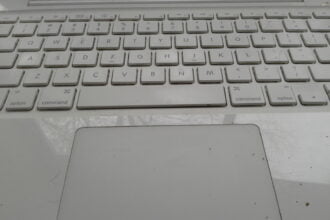 Inadequate handwashing is a huge problem in hospitals, contributing to as much as 70% of hospital-acquired infections (HAIs), according to the US Centers for Disease Control and Prevention.
Inadequate handwashing is a huge problem in hospitals, contributing to as much as 70% of hospital-acquired infections (HAIs), according to the US Centers for Disease Control and Prevention.
 Inadequate handwashing is a huge problem in hospitals, contributing to as much as 70% of hospital-acquired infections (HAIs), according to the US Centers for Disease Control and Prevention. Seth Freedman, co-founder and CEO of IntelligentM, and his partners believe they have a simple, innovative solution to boosting hand-washing rates—a smartband that contains electronic sensors to determine whether or not a healthcare worker is washing his or her hands effectively. In this second part of our interview, I discuss the barriers and challenges to introducing a new healthcare technology.
Inadequate handwashing is a huge problem in hospitals, contributing to as much as 70% of hospital-acquired infections (HAIs), according to the US Centers for Disease Control and Prevention. Seth Freedman, co-founder and CEO of IntelligentM, and his partners believe they have a simple, innovative solution to boosting hand-washing rates—a smartband that contains electronic sensors to determine whether or not a healthcare worker is washing his or her hands effectively. In this second part of our interview, I discuss the barriers and challenges to introducing a new healthcare technology.
An Interview with IntelligentM Co-Founder Seth Freedman – Part Two
What obstacles have you encountered with creating a market for your new product?
The hardest issue for us is that it’s very difficult to sell new technology to hospitals. That is a historical pattern. If you look at the introduction of magnetic resonance imaging (MRI) and smart infusion technology, they weren’t accepted immediately either. Hospitals are large, bureaucratic organizations, often reluctant to change. It’s a difficult environment with lots of approval points and long sales cycles. Smaller, product development companies are all experiencing this reluctance now. So, we’re talking with early adopters of technology products at hospitals, and at specific healthcare facilities that are known to be early adopters of technology. Once those organizations validate electronic hand hygiene compliance products, ours and our competitors, then the purchasing and usage of these products becomes more widespread.
Where are you finding these early adopters?
We’re looking at hospitals known for early adoption of technology, as well as other types of healthcare facilities like independent surgery centers and skilled nursing centers; infections are a financial pain point for these facilities as well because of regulations from the Centers for Medicare and Medicaid Services (CMS) that base reimbursements on readmission to hospitals. For example, we’re working with a skilled nursing facility that handles patients in the shadow of a hospital in Newport Beach, California. The hospital has to provide services for readmission for infections for a patient that is discharged to a skilled nursing facility (and can’t be reimbursed by CMS if a patient is readmitted within 30 days). So, it’s mutually beneficial to reduce infections at the skilled nursing facility as much as possible.
Did you apply technology from outside healthcare to arrive at your products?
I don’t know that we took anything from outside—although two of our partners (including me) don’t have healthcare experience. Perhaps if you don’t know what you don’t know, that can be helpful to apply fresh perspective to a problem! For IntelligentM, we had the ability to use a solution that was very simple and thus very low cost. Also, when you’re not first in the space, you can see why competitors are gaining—or not gaining—traction. We could see why people were not seeing progress. Their solutions were just “half” solutions because they didn’t address the “how” part of hand hygiene compliance. More importantly, these solutions are very expensive, in terms of both technology and infrastructure. Running cabling to connect a sensor, for example, is very expensive. So is setting up a room for monitoring. We’re just using common hardware, very smart software and no new infrastructure.
Should HAIs be on a patient’s mind when entering a hospital?
My recommendation is for any patient to get out of the hospital as quickly as possible. But while there, a patient should not be afraid to speak up if he or she sees workers not following appropriate hand hygiene practices. Asking a worker to wash his or her hands is easier said than done, because a patient understandably may not want to make a caregiver upset. But it’s a simple, important act to reduce HAIs.
What advice would you have for digital health innovators?
I’m a believer in a simple four-step process, specifically as it applies to innovation in healthcare:
- Validate that somebody will actually buy what you’re planning to provide.
- Figure out a way to provide the solution.
- Don’t run out of money.
- Scale-up as quickly as you can.
Sometimes an industry finds itself at an entirely different point from where it started—a lot of new companies start with an anticipated approach or product, but then they pivot and come up with other, more successful options. It’s important to be successful and savvy enough to take advantage of other opportunities when they present themselves. For IntelligentM, that may be happening soon. We started thinking about innovations in healthcare, but now we’re talking with food service companies. These companies are asking whether their employees know what it means to wash hands properly. We have a system that can tell.
(handwashing / shutterstock)






